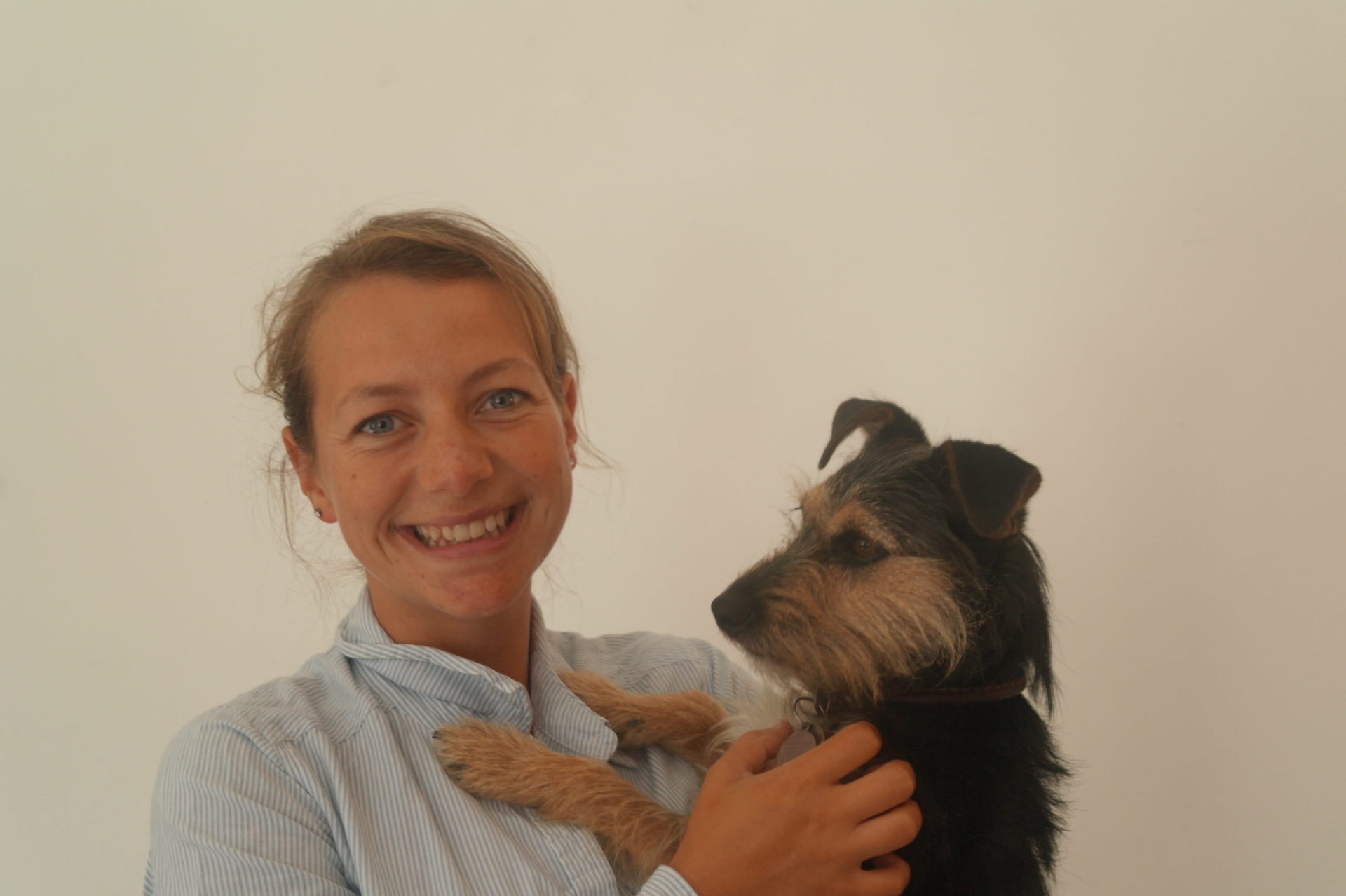Panic attacks are an extreme display of fear that can be caused by underlying anxiety or phobias. It’s not always possible to find a trigger, but professional help is important to get to the bottom of what’s happening.
Severity:
Moderate to severe
Table of Contents
Key points
- Symptoms include pacing, drooling, escape attempts, shaking, and vocalizing
- Trigger is usually obvious may not always be identified
- Pain and organ dysfunction need to be ruled out before referral to a behaviorist
- Prevention involves good breeding, proper socialization and early training.
Common in:
All ages, all breeds and genders, but working breeds such as the Border Collie may be predisposed.
Symptoms and types
Vets and canine behaviorists think that dogs can experience panic attacks just like humans. Whilst anxiety is common in dogs, panic attacks aren’t just being a bit nervous and fearful – they’re full-blown, extreme reactions that are completely out of proportion to the danger they’re in. Behaviorists can’t agree whether the extreme anxiety displayed during reaction to a phobia is a panic attack or not. Some say that, by definition, a panic attack has no trigger, so reaction to a phobia, however extreme, isn’t a panic attack. However, most say that a ‘panic attack’ is an extreme collection of symptoms, and argue it can be caused by known anxiety disorders like phobias.
Symptoms of a panic attack include:
- Escape behavior or hiding
- Destructiveness and digging
- Nausea, vomiting, and diarrhea
- Urination
- Pacing
- Trembling
- Sudden panting and drooling
- Frantic attention-seeking behavior
- Howling, barking, or whining (vocalization)
Understanding the diagnostics
Diagnosing canine panic attacks involves ruling out a lot of other possible causes for the behavior. Your nearby vet will need to conduct a clinical exam and check your pet over thoroughly for any conditions that could be causing pain. They may also recommend blood tests to check for organ dysfunction.
Once a behavioral cause has been identified, a canine behaviorist may be needed to further narrow down the cause of the panic attacks. They will need to differentiate the panic attack from other behavioral conditions that can appear similarly.
Learning about the causes
Panic attacks are an extreme response to a (sometimes unknown) trigger, and it can therefore be caused by a number of things.
1. Noise phobia
Noise phobia is one common cause of a canine panic attack. The trigger can be the noise itself, or other things the dog associates with the noise – like changes in air pressure ahead of a storm. Since we humans can’t always pick up on these changes, these panic attacks can appear random.
2.Separation anxiety
Some dogs experience severe panic when being left alone. Naturally a sociable species, it’s normal for dogs to prefer to be with their owners. For some dogs, the sound of coats being put on or keys jangling is enough to cause a panic attack at the thought of being left behind.
Separation anxiety is often caused when dogs are not properly introduced to being home alone and are used to having family around at all times.
3. Confinement anxiety
Some dogs are anxious about being in a cage or small space and can become extremely panicked. These may be dogs who have been kenneled for some period of time in their past, or who have not been properly trained to use a crate.
4. Vet and groomer visits
A bad experience can cause dogs to become extremely afraid of the vets or groomers. Dogs may panic at the sight of the practice or at signals like nearby sounds that mean they’re close by.
The ‘bad experience’ that usually sets off these attacks can be related to noise, pain, separation from owners, and being confined — all of which can be necessary in a veterinary practice.
Best treatment options
Avoiding the trigger is usually not possible. Most canine panic attacks will need specialist behaviorist help to identify the cause and create a treatment plan. Your behaviorist will likely use a combination of desensitization (reducing the fear), counter-conditioning (training a new emotion to the trigger), and response substitution (training a replacement behavior for the trigger).
Depending on your dog and their triggers, your pet may also be prescribed medications that help with fear and anxiety whilst the behavioral program is being implemented.
Home remedies and their effectiveness
There are no home remedies that are effective for a full-blown panic attack.
However, there are some things you can do at home to calm your dog down or to reduce generalized anxiety:
Provide Exercise
Exercise helps to tire your pet, and it releases endorphins, the ‘happy hormone‘. Unless their trigger is something likely to be encountered when exercising, increasing your dog’s exercise regime can help to combat anxiety.
Provide Mental Stimulation
There’s a reason that the cleverest dog breeds are often the most neurotic! Playing games and training help to tire your dog out mentally, reducing the available brain power to get worked up and anxious. Try to include training, games, and puzzle feeders as part of your dog’s daily routine.
Supplements and diffusers
Anti-anxiety supplements containing ingredients like L-tryptophan that boost happy hormones can help to reduce generalised anxiety. Diffusers containing pet-safe calming scents or even pheromones can be used to create a safe space for your dog.
Stay calm and soothe them
Getting upset or angry with your dog will only make the situation worse. If your dog is experiencing a panic attack, talk to them in a calm voice. Try to distract them by playing or practicing basic commands (like ‘sit’) with a high-value treat—now isn’t the time for new training, but for giving them easy tasks they can complete to gain confidence and control over their situation.
When to see a vet
Whilst proper diagnosis and treatment of a canine panic attack may need to be left to a behaviorist, it’s important you contact a vet first. They can ensure there are no pain or medical reasons for the behavior and then make the referral to a specialist behaviorist. The vet and behaviorist will need to work together to get to the bottom of your pet’s problem.
Panic attacks are not a normal response to anything—by definition, they’re over-the-top and out of proportion to the danger your dog is in.
It also goes without saying that dogs experiencing panic attacks can injure themselves. Take your dog straight to the vet if they have become injured during their panic attack.
FAQ
If your dog comes to you for reassurance, talk to them in a calm voice. As long as it is safe to do so, you can pet him, groom him, or do anything else he likes. Going for a walk, playing a game, or practicing easy tricks can all help to distract your dog. If your dog would rather take himself off, don’t pressure him to engage in play – instead, make him a safe space, play calming music, and keep an eye on him.
Dogs experiencing a panic attack will generally be trembling, with wide eyes, and a stiff posture. They’re likely to be drooling, panting, and barking or howling. Pacing, destructiveness, or attempts to escape are also common. They may also urinate or defecate involuntarily.
A dog can experience a panic attack for a number of reasons. Common triggers include noises, strange or scary places, or separation anxiety, but we don’t always discover the trigger. Keep your dog calm, and book a visit with the vet to get to the bottom of it.
Choosing a well-bred puppy can help to reduce the risks of panic attacks in dogs, as neonatal and early-life experiences can trigger later panic attacks. Puppies should be from calm dogs without symptoms, who have been wormed throughout pregnancy. They should not leave mum until 8 weeks of age, regardless of whether they are weaned.
Properly socializing your puppy to sounds and stimuli is an important part of preventing panic attacks. Take the opportunity to introduce scary noises, vet visits, the dog crate, and ‘alone time’ to your dog from a young age.
Remember to keep calm during training, and always to use positive methods, as physical punishment can cause anxiety.

After graduating from the University of Nottingham, Jo went on to work in companion animal practice in the UK. After spending time in an orthopaedic referral hospital, a feline only practice, and a general practice with out-of-hours, she moved to working as a locum relief vet in order to spend more time writing. She lives in the Channel Islands with her partner Ian and their badly behaved terrier, Pixie.








